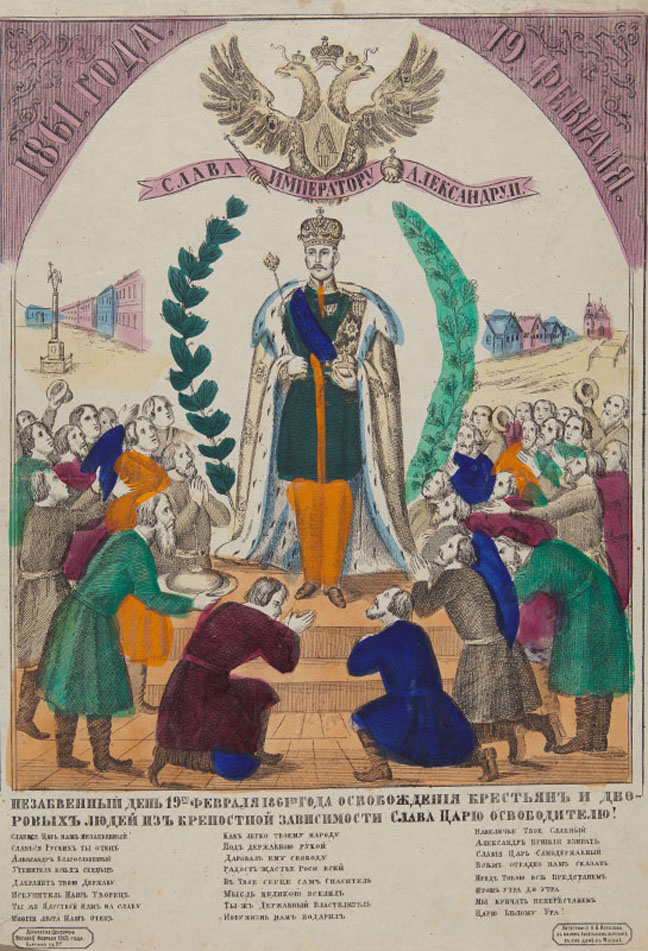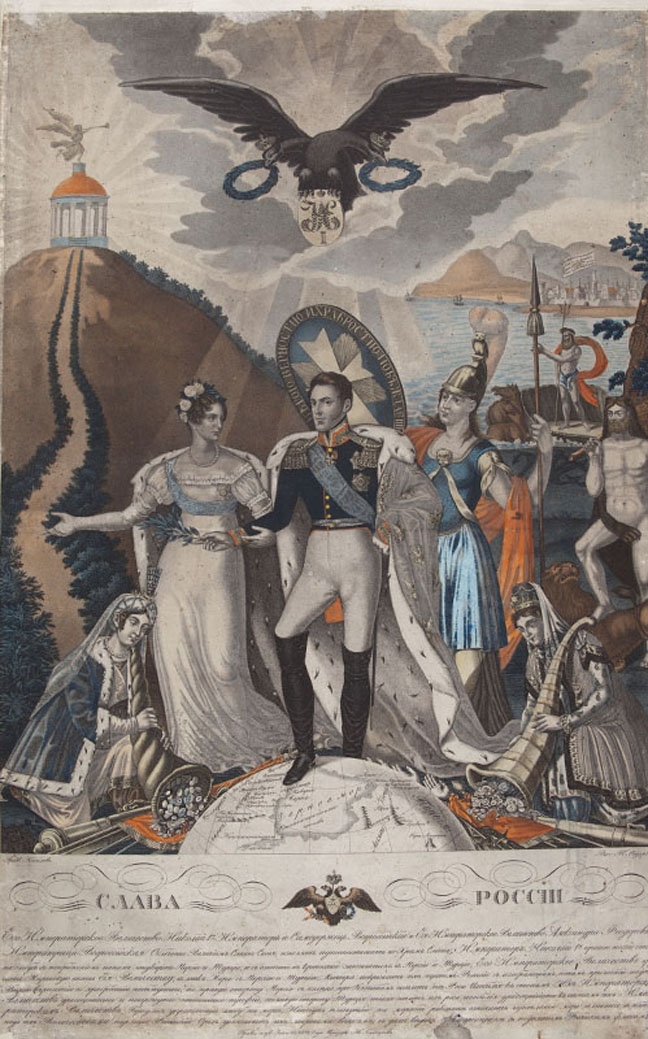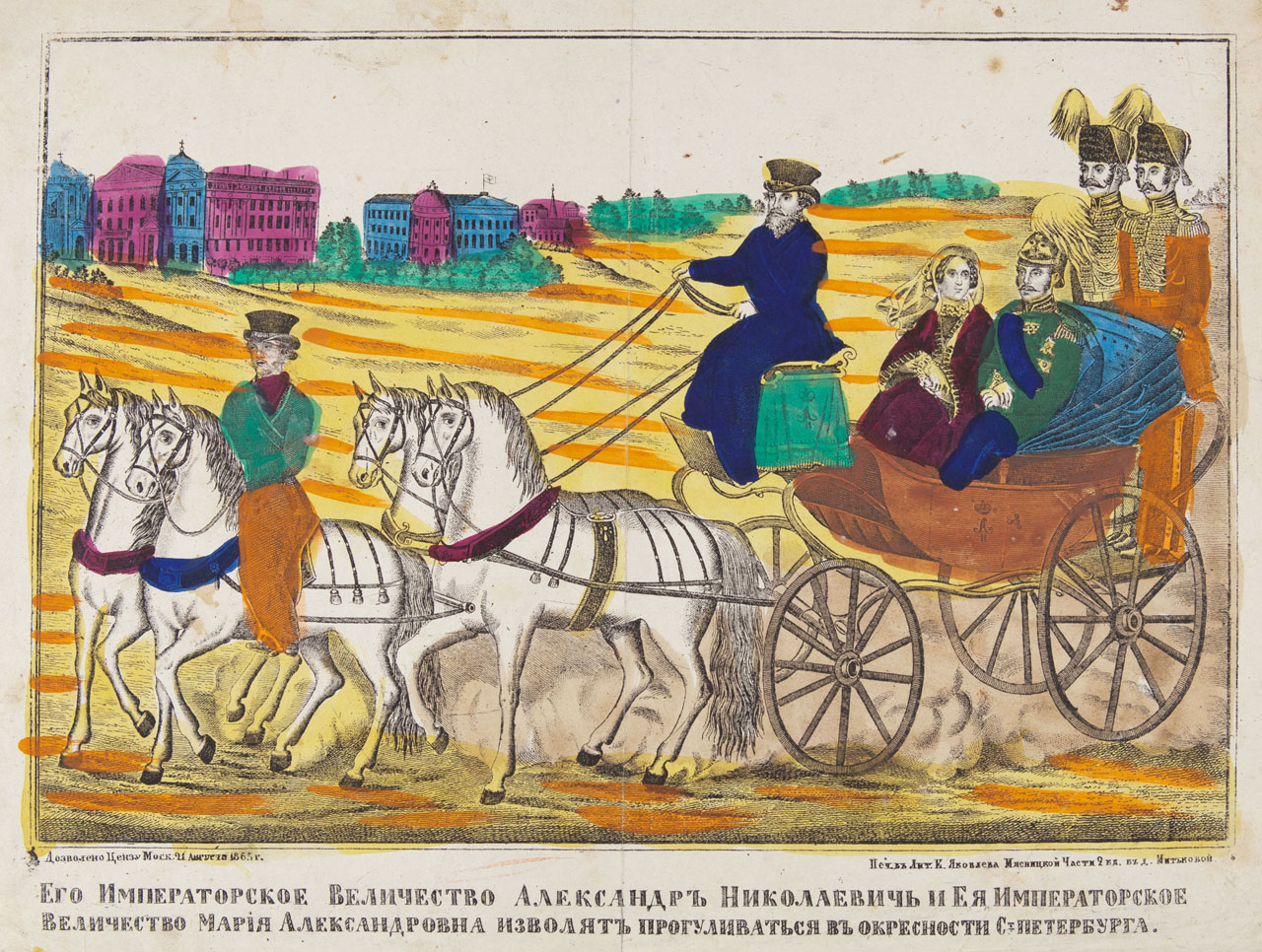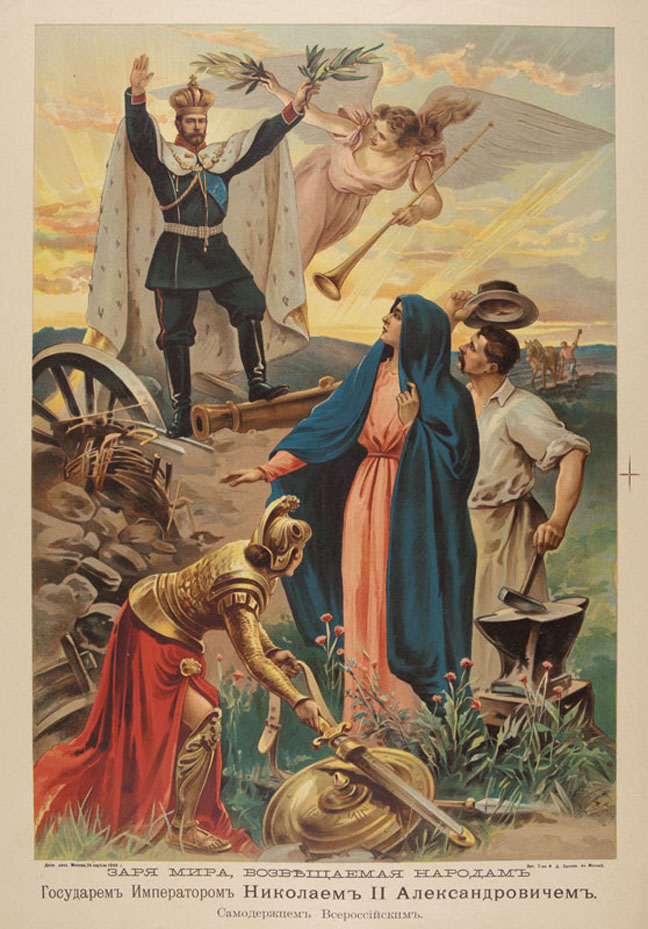Breaking court news for the illiterate: The Romanovs in popular prints

Lubok, a genre of Russian popular print, has turned its hand to various subjects over its 200-year history: from the mythical to the religious, the domestic to the humorous, the didactic to the satirical. // Heart of Russia, 1877
Courtesy of State Historical Museum
Popular prints covering current affairs always went down well with the Russian reading public. Demand was particularly strong for images of dynastic rulers and episodes from the life of the royal family. // Emperor Nicholas I in Moscow in March 1830; 1830
Courtesy of State Historical Museum
Their function was not only to entertain, but to inform, replacing periodicals for illiterate people across the Russian Empire. // Peter the Great at Lake Ladoga; 1833
Courtesy of State Historical Museum
The advent of lithography in the 1840s made it cheaper and easier to make popular prints, while the invention in the 1860s of color printing—chromolithography—brought them to the masses. // Unforgettable day: the liberation of the serfs on 19 February 1861; 1865
Courtesy of State Historical Museum
The monarch as defender of the state was a common theme in popular prints. The emperor was often depicted inspecting troops or out in the field. Even portraits of rulers whose reigns were not bloodied by battles had a militaristic flavor, because military uniform was standard dress for any self-respecting emperor. // Glory to Russia; 1831
Courtesy of State Historical Museum
The lives (and deaths) most scrutinized in popular prints were those of the last three tsars of Russia: Alexander II, Alexander III, and Nicholas II // The passing of Alexander I in Taganrog on 19 November 1825; early 1830s
Courtesy of State Historical Museum
Lubok painters paid particular attention to royal private lives and family events: the coronation, the birth of children, stately visits and receptions, ceremonial portraits of the royal couple surrounded by numerous heirs. // Peter the Great takes Catherine from Prince Menshikov; 1833
Courtesy of State Historical Museum
Recurring themes acquired modern details. Today, they give an insight into court life and how lubok was influenced by contemporary art. // Emperor Alexander II and family riding in a carriage near St. Petersburg; 1865
Courtesy of State Historical Museum
From the ceremonially aloof Alexander II to the intimate, less detached Alexander III and Nicholas II, fleshed out with elements of Art Nouveau. // The dawn of peace proclaimed to the nation by Emperor Nicholas II; 1899
Courtesy of State Historical Museum
Coronations were an absolute must for popular print makers. Pieces devoted to them convey the core rituals and splendor of the ceremony. // Peter the Great crowns Empress Catherine I; 1833
Courtesy of State Historical Museum
Official portraits of the emperor and empress were also very popular among ordinary folk. Most portraits focused on their traditional lifestyle and many children, emphasizing the continuity of family and state values. // Nicholas I and family visit an industrial exhibition in Moscow on 2 November 1831; 1832
Courtesy of State Historical Museum
Often the only source of information about life inside the court, lubok allowed the non-privileged classes to get closer to the Imperial family. // Legend of how a soldier saved the life of Peter the Great; 1914
Courtesy of State Historical MuseumSubscribe
to our newsletter!
Get the week's best stories straight to your inbox